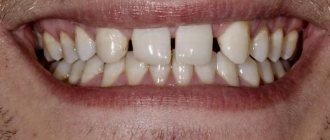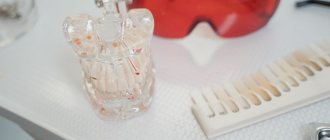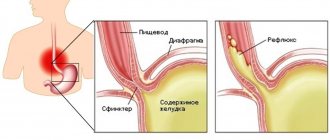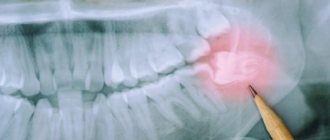Edentia is a term that dentists use to designate the complete or partial absence of teeth in the jaw. In this condition, the patient needs the help of a dentist. And at the very first stage of interaction, the question of choosing the optimal orthopedic design arises. But the problem is not which prosthesis to put in if there are no teeth. The main thing in this matter is to determine the correct recovery technique for a specific clinical situation.
The main factors that influence the choice of prosthesis
Orthopedic dentistry today offers a wide variety of designs for restoring any number of teeth. To choose the best one, it is necessary to take into account both objective and subjective factors:
- Medical indications and contraindications. The condition of neighboring units, soft and hard tissues, general health indicators, the presence of allergies, and age are important.
- Patient's wishes regarding the aesthetics of prosthetic structures. If you need to restore your front teeth, it is advisable to choose crowns made of metal-free ceramics or zirconium dioxide.
- Requirements for ease of use and functionality. Dentures made from modern high-tech materials are well retained in the oral cavity and make it possible to chew any food normally.
- Financial restrictions. Often, the cost of a prosthesis becomes one of the main factors that influences the patient’s final choice.
Causes of loss of front teeth
- genetic abnormalities: in such a situation, the child may not develop not only permanent teeth, but also milk teeth. Their rudiments cannot be determined by touch or by x-ray examination, since they are simply absent. The cause of this pathology is serious problems of the body, various diseases of the pregnant woman, which affected the condition of the fetus, or rather, the formation of its skeletal system and the dental buds itself,
- caries: this disease begins destruction from the enamel, gradually moving to dentin. If timely treatment is not carried out, more severe diseases, for example, pulpitis, may soon develop. With this scenario, the likelihood of losing front teeth increases significantly. If treatment cannot be carried out, it is better to carry out removal followed by prosthetics,
- other diseases of the oral cavity (periodontitis, periodontal disease): regardless of the specific type of pathological process, all of them can cause tooth loss if appropriate treatment is not carried out in time,
- improperly performed therapeutic or surgical treatment,
- trauma: severe mechanical damage to the jaw can result from tooth breakage, which will lead to the need for its removal. The rudiments of permanent elements can also be injured. If significant damage has been caused to them, the teeth stop developing.
Important! Even if the row is fully formed, it is worth remembering that the loss of just one tooth can lead to the displacement of the rest and cause serious malocclusion.
Which prosthesis to choose if one or more dental units are missing?
So, if there is no tooth, what kind of prosthesis can be placed? In this case, the patient is offered the following options:
- Immediate prosthesis. This is a crown with artificial gum, which is attached to adjacent teeth using flexible clasps. This type of prosthesis is used mainly temporarily, but some people wear it for a whole year or even longer.
- Dental bridge. A good choice for restoring one unit, provided that the adjacent teeth are pulpless or affected by caries.
- Crown on an implant. The most durable and rational means of prosthetics. When it is used, not only the supragingival but also the subgingival part of the tooth is restored.
Crowns made of pressed ceramics and zirconium dioxide look the most natural and last the longest. When they are installed on implants, it is possible to effectively restore all functions of lost teeth, including aesthetic ones.
Pros and cons of temporary solutions
The advantages of temporary orthopedic structures are as follows:
- fast production,
- quite good aesthetics at first,
- low cost.
The disadvantages include, first of all, not very reliable fixation - even non-removable temporary ones can come off and fall out while chewing food. The disadvantages include low strength and rapid loss of aesthetics. Since the surface of plastic and composite materials is porous, food deposits, pigments, and microbes settle on it - and it is impossible to bleach the product to its original appearance.
What designs are best used to restore several teeth?
If two or three units are missing, it is optimal to replace them with the same number of crowns on implants. But in order to save money, you can also install a dental bridge. To fix it, it is also better to use titanium rods rather than abutment teeth. In this case, it is enough to install only two implants and make the middle crown cantilever. The most aesthetic and durable material for such prosthetics is zirconium. But for the restoration of chewing teeth, more affordable metal-ceramics are also quite suitable.
Problems that arise due to missing teeth
The absence of one or more elements of the frontal zone significantly affects the psychological comfort of the patient. The aesthetics are disrupted, which occurs due to the presence of gaps in the row, due to the retraction of the upper lip into the oral cavity, since it does not have support from the teeth. Psychological discomfort is the main consequence of this pathology. But not the only thing.
If recovery is delayed for a long time, the following complications may develop:
- displacement of the remaining teeth in the row due to lack of lateral support,
- displacement of the teeth located on the opposite jaw - they are literally pulled out of their sockets, again due to lack of support,
- atrophy of bone tissue in the place of absence of tooth roots,
- deformation of the face shape, the appearance of wrinkles.
Is it difficult to get used to wearing dentures?
Most patients note that getting used to the structures did not cause them any significant difficulties. If they are made and installed correctly, then there should be no painful sensations. However, temporary discomfort may be present, but this usually resolves within a few weeks.
Doctors note that the process of addiction is purely individual. Some people feel great almost immediately, others cannot come to terms with the feeling of a foreign body in the mouth even when restoring 1 tooth (especially if a removable option was chosen).
Bridges
Indications for the use of a bridge-type prosthesis are medium-length defects limited on both sides. Before prosthetics, photographs are taken to study periodontal tissue, the condition of which is very important for choosing the correct method of orthopedic treatment. In some clinical cases, treatment of carious lesions and their complications may be required. After anesthesia, grinding is carried out, an impression is taken and sent to the laboratory. After testing, the finished structure is firmly fixed with orthopedic cement.
Depending on what material the bridge crowns are made of, the following types are distinguished:
- metal-ceramic (combined);
- metal-free (porcelain, ceramic, zirconium);
- plastic.
The plastic type of crowns does not have sufficient strength and aesthetics, therefore they are most often used in temporary (provisional) products. Metal-ceramics are very resistant to damage, can withstand heavy loads and are well suited for recreating the posterior part of the teeth. The use of metal-ceramic crowns to replace incisors and fangs that are visible when smiling can give an unaesthetic result. Zirconium crowns are the most durable and natural, with the help of which they effectively restore both the front row of teeth, where aesthetics are important, and the side teeth, which experience high chewing pressure.
Advantages of bridge products:
- the possibility of replacing several adjacent teeth;
- durability: their service life reaches 10 years;
- low cost compared to implantation systems.
A relative disadvantage of a bridge is the need to grind down healthy teeth. If the patient wishes to keep the remaining teeth intact and do without preparation, it is possible to install an implant as the main support.
Do you want beautiful dental restoration?
8
or order a free call
Request a call
How the shades of cement were selected during fixation
The work on dental restoration was varied, and we worked with both crowns and dental modules:
- the upper anterior teeth, which were restored using “crown + tooth root” modules, were fixed with double-curing cement,
- and those teeth on which I placed veneers and crowns were fixed with light-curing cement so that in bright daylight the glue would not be noticeable
Light reflecting off the crown or veneers can make the luting cement visible. In addition, due to the fact that the working surfaces of the teeth were of a non-uniform color, with the presence of a yellow tint, it was necessary to work with different colors of cement. That is, I used more yellow cement where the roots of the teeth were and used light-neutral-colored cement on the veneers and crowns to achieve a uniform color scheme. It's very difficult to get the color perfect
.
But we managed to do
:
Naturally, Aryuna is now the most super beautiful:
Aryuna, as I said earlier, works on television, she is a fairly public person - she interviews TV and show business stars. She appears on camera very often, and for her such a smile is not only a guarantee of her good mood, but also great confidence in herself and her abilities. After all, an open and cool smile is the key to female success
! This job, according to her, is the ideal solution for her. Made your smile easy, quick and beautiful!
Aryuna left a video review, short but very charming
:
And in conclusion of my story about this case of restoration of the front teeth, let’s once again go through all the stages
of transforming Aryuna’s smile:
- Photo BEFORE the start of
dental restoration. Aryuna came to me with such a smile; she has old temporary structures. - View of temporary structures on the 6 anterior teeth of the upper jaw.
- Temporary structures were removed and teeth and tooth roots were prepared for prosthetics.
- Selecting the color of the veneers.
- New temporary structures were installed. Your smile transformation has begun!
- Aryuna's smile with new temporary structures.
- In the meantime, we prepared the permanent teeth. This is how they “sit” on the model.
- And this is what all the elements of the teeth that we will install for our patient look like
- The teeth have been installed. Close-up - looks great!
- View of a smile on the right
- View of a smile from the left
- FINISH!
ARYUNA'S SMILE WITH NEW TEETH!
Author:
Sergey Samsakov
orthopedic dentist
born 02/02/1989
Education:
2011 — Graduated from the Moscow State Medical and Dental University named after. A.I.Evdokimova
2012 — Internship in the specialty “Orthopedic Dentistry”, Moscow State Medical University named after. A.I.Evdokimova
2014 - Residency in Orthopedic Dentistry, Moscow State Medical University named after. A.I.Evdokimova
The cost of restoring a smile
The cost of prosthetics depends on what type of prosthetics was used, what materials were used, whether additional manipulations were necessary - treatment, root removal. So, for example, prices for metal-ceramic crowns start from 7,000 rubles, ceramic ones - from 20 thousand, zirconium dioxide - from 25 thousand rubles. Installing an implant will cost at least another 20-30 thousand. Temporary orthopedic structures cost from 2,000 rubles.
1Goldstein R. Aesthetic dentistry, 2003.
Your questions and answers
QUESTION Hello, my front side tooth is broken. And it broke almost at the root. From the outside it is very noticeable. What is the best way to “fix” it? Or just delete, and there are no other options? Vladislav K.
ANSWER Hello, Vladislav. If the root of a broken tooth is healthy, then it may well serve as a support for a prosthesis. But you can find out more about this at a face-to-face appointment with a dentist, because... you need to take an x-ray and see “what’s inside.” Further, as for the “repair” - prosthetics, you can install a crown (preferably ceramic) supported by a pin or stump inlay. But even if the dentist insists on removal, do not rush to install a regular bridge, because... it will require the use of 2 healthy teeth at the edges. You will have to grind them down and remove the “nerve” - this will reduce the service life of the supporting teeth. Plus they will be overloaded. Therefore, if removal cannot be avoided, then the ideal option is an implant with a crown on top.
Author: Chorny S.V. (Thank you for your help in writing the article and the information provided)
Modern technologies in prosthetics
The improvement of many orthopedic methods in recent decades is associated with the widespread introduction of digital technologies into dental practice. Computer data processing is used at all stages of prosthetics: during diagnosis, planning and directly during manufacturing. Thanks to the possibility of digital modeling, you can draw up a plan with a 3D visualization of your smile, which makes it possible to familiarize yourself with the expected result before starting treatment.
With the introduction of dental CAD/CAM technology, the processes of modeling and manufacturing of orthopedic structures have become as automated as possible. This significantly reduces the time required to restore the dentition, and also increases the accuracy of each element. Dental prosthetics in the absence of a large number of teeth using CAD/CAM is carried out as follows:
- Scanning the oral cavity with a highly sensitive intraoral camera that transmits information to a computer.
- The program constructs a virtual model of the oral cavity, taking into account all its features important for future prosthetics (relief and shape of the prosthetic bed, condition of the mucous membrane). Supplementing the model with X-ray data.
- Manufacturing a structure with specified parameters by computer milling and grinding.
In the manufacturing process by computer milling, modern high-quality materials with high biocompatibility are used. This method can quickly produce single or multiple crowns, bridges, and most microprostheses (veneers, inlays).
Fixed temporary structures
There are several varieties in this subgroup.
Plastic crowns: suitable for protecting fragile, pulpless and severely damaged teeth until permanent structures are created. It is recommended to replace such dentures immediately after making permanent ones, but the service life may be longer - 2-3 years.
Adhesive bridges: can be used as temporary structures in any situation. They are attached to the supporting teeth using guides or “wing” plates extending from the crown and dental cement. They do not require turning or depulping the supports. Maximum service life is 1-2 years. As a rule, they simply cannot withstand the load anymore.
Where can you put your teeth?
Where to put the teeth? Implantation and prosthetics services in Moscow are offered by a large number of dental clinics. However, it is important to choose the right dentistry, where your treatment and dental restoration will be carried out at a high level of quality.
Always find out the reputation of the clinic before contacting it and remember that low prices for implantation and prosthetics are often not a reason for joy, but rather a reason to be wary and check all the information on dentistry even more carefully. High-quality dentures, crowns, implants cannot cost a penny!
If you want to have your teeth treated with prosthetics and implantation, we invite you to visit our modern dental clinic in Moscow - “VENSTOM”. We are ready to offer each of our patients: comfortable conditions for treatment, an individual approach, and high quality of all procedures performed.
With us you can have teeth placed using any of the technologies discussed in the article. Qualified specialists from our clinic will help you choose the optimal dental restoration technique for you! You can get an initial consultation on dental treatment at VENSTOM free of charge!
Removable dentures for chewing teeth
Modern removable dentures for chewing teeth are divided into acrylic, nylon and polyurethane.
- Acrylic:
popular designs made of new generation acrylic, comfortable to use. In the absence of chewing teeth, an acrylic removable denture will provide greater strength than traditional plastic ones. - Nylon:
designs made of soft material, also comfortable and easy to get used to. Another advantage of nylon dentures for chewing teeth is hypoallergenicity. - Polyurethane:
Russian alternative to foreign nylon prostheses. They are made from a flexible plastic that is cheaper to produce than nylon but just as good in quality. The designs are recommended for people with allergies to metals and acrylic.










